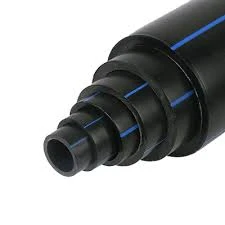Aug . 09, 2024 18:10 Back to list
Exploring the Essential Components and Types of Plumbing Pipes and Fittings for Home Installations
Plumbing Pipes and Fittings An Essential Guide
Plumbing is an essential aspect of modern living, providing us with clean water for drinking, cooking, bathing, and sanitation. Central to any plumbing system are pipes and fittings. Understanding the different types, materials, and uses of these components is critical for both DIY enthusiasts and professionals in the field.
Types of Plumbing Pipes
Plumbing pipes can be classified based on the materials used to make them. The most common types include
1. PVC (Polyvinyl Chloride) Pipes These pipes are lightweight, resistant to corrosion, and fairly easy to install. They are typically used for cold water systems and drainage applications. PVC is not suitable for hot water as high temperatures can deform the material.
2. CPVC (Chlorinated Polyvinyl Chloride) Pipes An upgrade from PVC, CPVC pipes can handle higher temperatures, making them suitable for both hot and cold water systems. They are also resistant to corrosion but should be used carefully, as they can become brittle over time.
3. Copper Pipes Known for their durability and reliability, copper pipes are often used in water supply lines. They can withstand high pressures and are resistant to corrosion. However, they require soldering for connections, which can make installation more complex.
4. PEX (Cross-Linked Polyethylene) Pipes PEX is a flexible and increasingly popular option in modern plumbing systems. It can be easily bent and molded to fit the layout of a home and can handle both hot and cold water. PEX also prevents scale buildup and corrosion. However, it is not suitable for outdoor use due to UV degradation.
5. Galvanized Steel Pipes Once commonly used for water pipelines, galvanized pipes are coated with a zinc layer to prevent rusting. However, they are heavy, prone to corrosion, and can contaminate water quality if used in older homes.
Types of Fittings
Fittings are crucial components that allow pipes to connect, change direction, and reduce the size of the piping system. Some common types of fittings include
plumbing pipes and fittings

1. Elbows These fittings are used to change the direction of the pipe. They come in various angles, commonly 90 or 45 degrees.
2. Tees Shaped like the letter T, these fittings allow for a branch line to connect to the main pipeline.
3. Couplings Used to connect two pieces of pipe together, couplings can be either threaded or slip types.
4. Reducers These fittings transition from a larger pipe to a smaller pipe, allowing for changes in flow volume.
5. Caps and Plugs Caps seal off the end of a pipe, while plugs are used within the pipe to close it off.
Installation and Maintenance Tips
When installing plumbing pipes and fittings, several considerations must be taken into account. Proper measurement and cutting are essential to ensure a tight fit, preventing leaks. Always follow local building codes and use approved materials for the job.
Regular maintenance can significantly extend the life of your plumbing system. Inspect pipes for leaks, rust, or corrosion, particularly in older homes with galvanized or copper pipes. It’s essential to replace any damaged sections promptly to avoid larger plumbing issues and water damage.
Conclusion
In conclusion, understanding plumbing pipes and fittings is vital for anyone involved in home maintenance or renovation projects. Whether you're installing new fixtures, repairing leaks, or planning a new construction, being knowledgeable about the types of pipes and fittings available will ensure a reliable plumbing system. Proper installation and maintenance will not only enhance the efficiency of the system but also provide peace of mind knowing that your home’s plumbing infrastructure is sound and secure.
-
Durable Glossy PVC Rigid Sheet | Premium High-Shine Panels
NewsAug.26,2025
-
Durable PP Rigid Sheet: Lightweight, Chemical Resistant Solutions
NewsAug.21,2025
-
PVC Grey Sheet for Extraction: Chemical Resistant & Durable
NewsAug.19,2025
-
Durable PVC Pipe Fittings for Plumbing & Irrigation Needs
NewsAug.18,2025
-
HDPE Steel Belt Reinforced Spiral Corrugated Pipe | High Strength
NewsAug.17,2025
-
HDPE Pipe Fittings: Durable, Leak-Proof Solutions
NewsAug.16,2025

